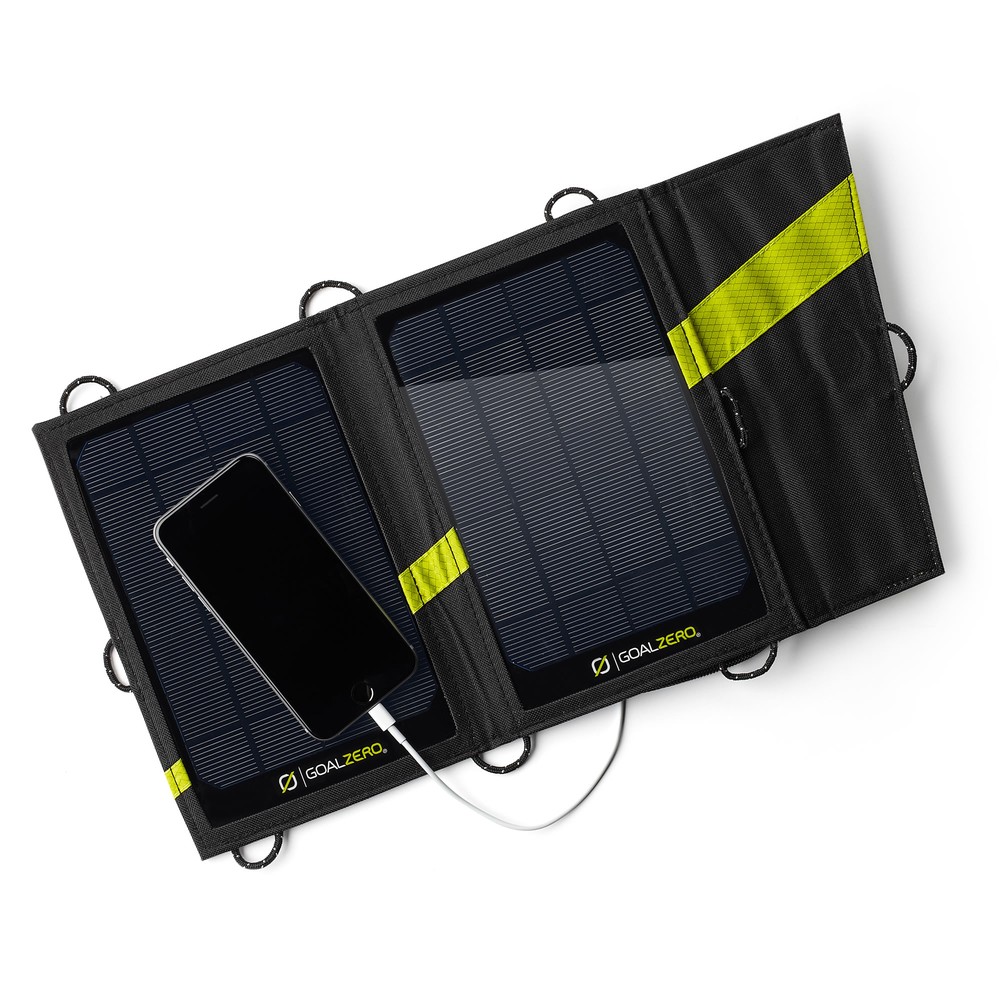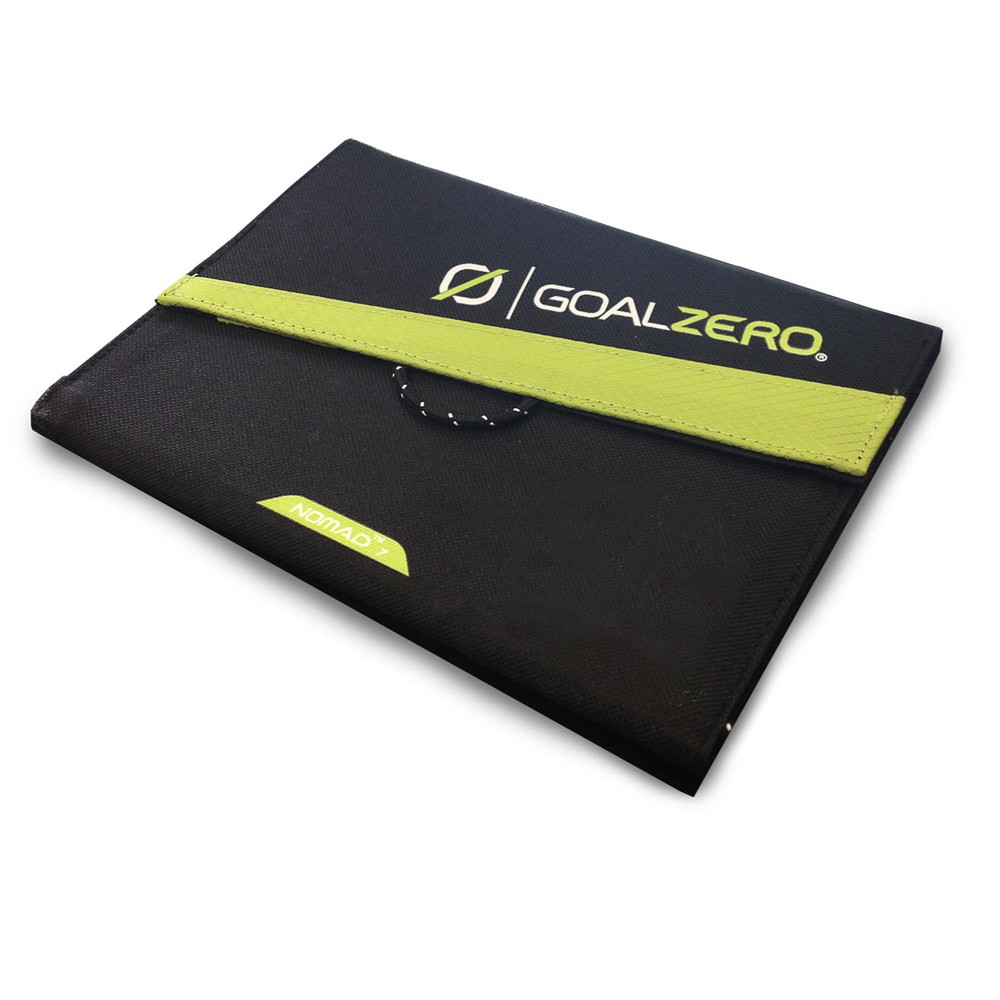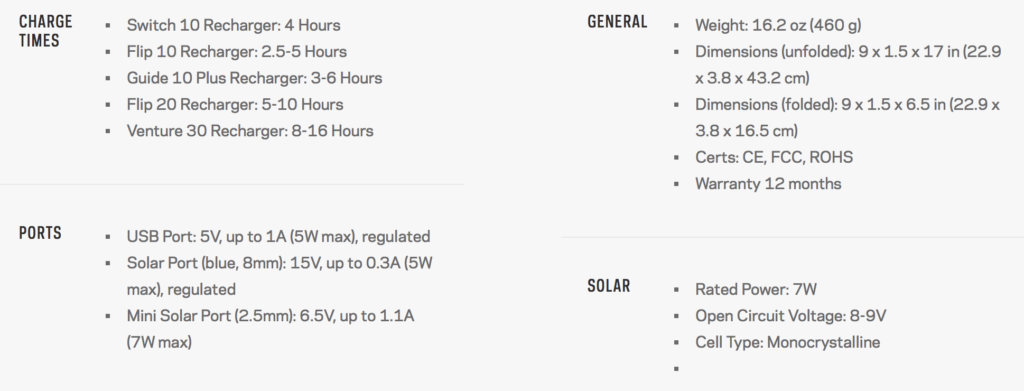Keeping your mobile devices powered is a constant challenge in our day-to-day lives. Doing the same when carrying out critical and life-saving work is even more important and challenging. Quite often this challenge is even more complicated by the absence of a main power source. In other words; there is no wall socket of powered USB port that you can plug your charger into. In that case there are very few options; you can use a portable battery pack but eventually that will also run out after 1-2 recharges. As wind power is generally not really portable solar has become the only sustainable option. There is a wide range of portable solar chargers available ranging in size and capacity. Size does matters in this case which means that the larger the panel surface is the faster it charges your device. This review will look at the Goal Zero Nomad 7 panel.
I’ve been using the same Nomad 7 panel since the hurricane Sandy deployment at the end of 2012 and after 6 years and a dozen countries the panel is still in my go-bag. It’s a foldable design meaning that you have 2 panels which fold closed like a magazine. There is a small junction box on the inside corner of one of the panels. On the original device this junction box had a single USB port allowing you to connect a charging cable for your device. Goal Zero recently improved the junction box and in addition to the USB port it now has a 12-volt out, a connector for the Guide 10 rechargeable battery pack and a connection which allows you to daisy chain multiple Nomad solar panels (even ones from different sizes). The junction box also has an indicator light which turns blue if the panels are providing a charge.
Verdict:
First observation is that the Nomad 7 is extremely sturdy. After years of use and abuse it still is my default means of charging when traveling. The panels are scuffed and scratched but still provide enough charge to keep my devices going. The design is compact and rugged and can easily be stowed in a small daypack of in the glovebox of a car. There are loops along the side which allow you to hang the panel from your daypack (for charging on the go) or from a tent, fence, building or a tree-branch. The junction box itself has also stood up to all the abuse which included being walked on repeatedly. Things to note though is that if you are trying to revive a device from a completely empty battery that it will take a while. However that is with any solar panel this size and not exclusive to the Nomad 7. Another thing is that the more direct exposure to sunlight the faster it charges your device so it is worth moving the panel as the sun traverses the sky (well it’s actually the earth which turns…) so that it catches the maximum amount of direct sunlight.
At a price of $80 in the USA or around 100 euro it is a very affordable and worthwhile investment.
For more details please see the Goal Zero product page.





I have several of these and have advocated their use in our workshops. They really are pretty amazing technology and work great.
I had one of the original Nomad 7’s and used it many times during training and for an extended S&R mission several years ago. I used it to keep my 50w base radio battery charged during the day (12v 22.5Ah), but it didn’t quite have enough power to fully recharge it the following day if we used the radio heavily over night. We’d get it charged by connecting to a vehicle when available, but I wanted to do something better. Several weeks later I spoke to one of their sales reps at a local store about getting a larger panel, and that’s when I saw they had the new daisy chain feature. They worked with me to upgrade my existing panel to chain in and give me plenty of power in a portable unit. Other members use Nomads to keep cell phones charged while mobile (our off-grid GPS tracking uses the GPS from a phone to transmit coordinates through a handheld radio. The radio batteries normally last all day, but the phones wouldn’t.)
As Evert said, charging a dead battery is going to take some time, but maintaining a charged battery on an item that has a constant drain is where these shine. As I use mine in a more stationary setting, moving it around to follow the sun greatly improves the power output. If we’re in the bush, I’ll stay in the shade and use a heavy cable to set the Nomads out in the sun, normally laying on my pack so they are angled to the sun and easily moved throughout the day. If we have a more accessible setting with canopies I’ll put them on top of the canopy and again move them as needed. If you do this, always tie them off because invariably someone will hit the cable and knock them off the canopy.